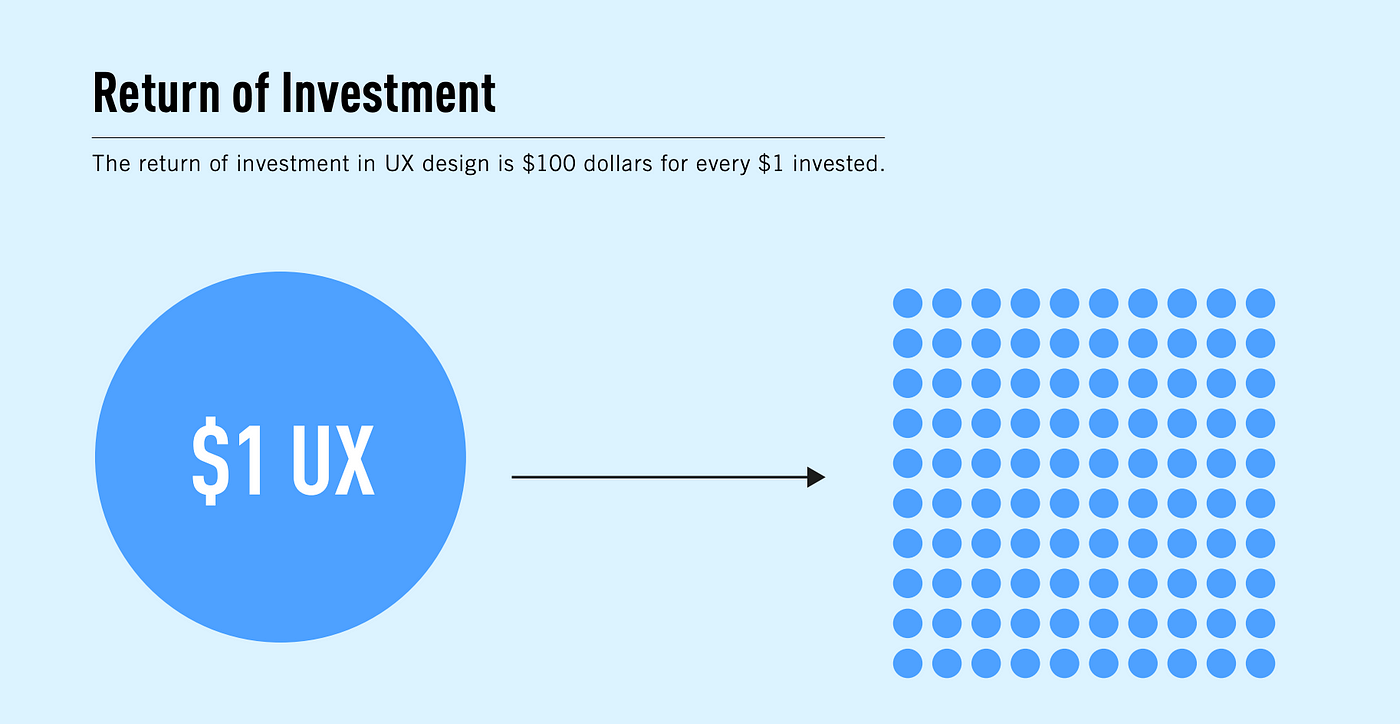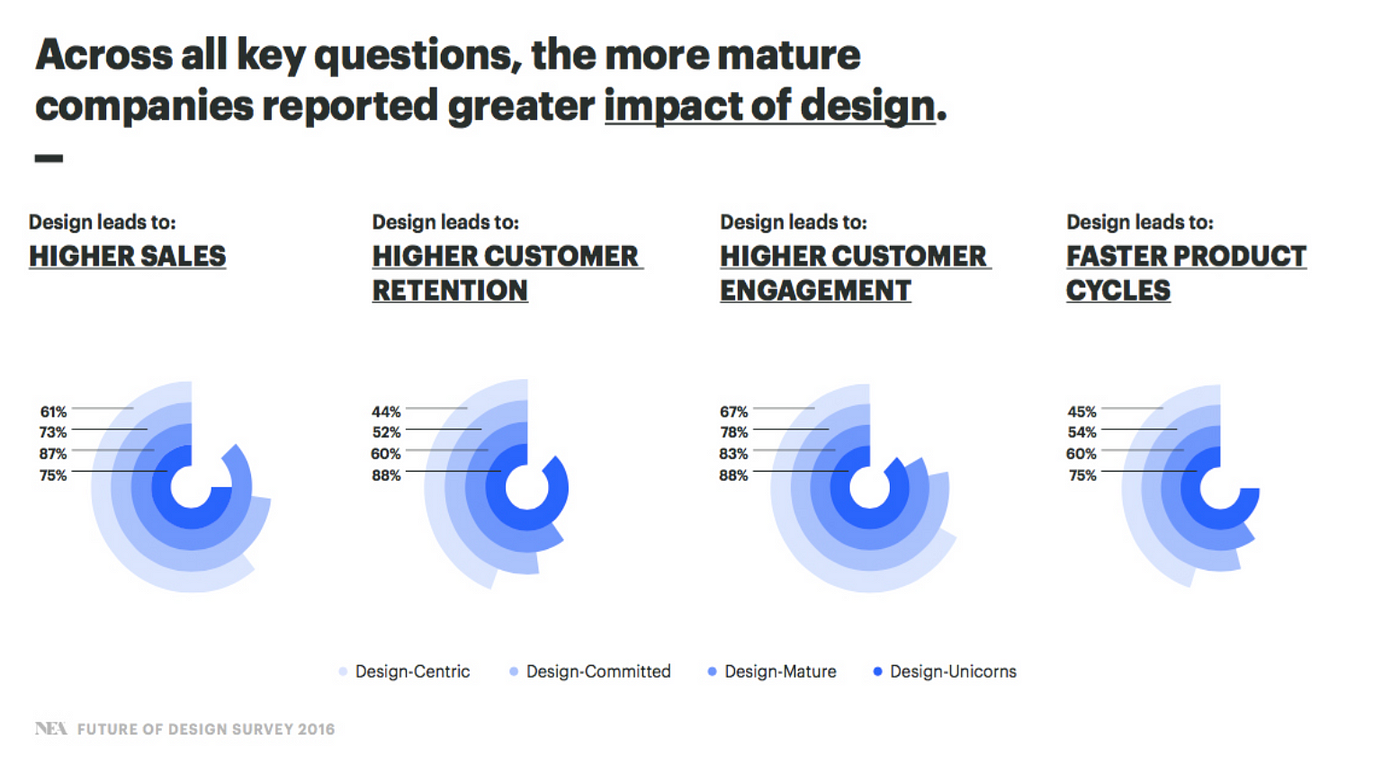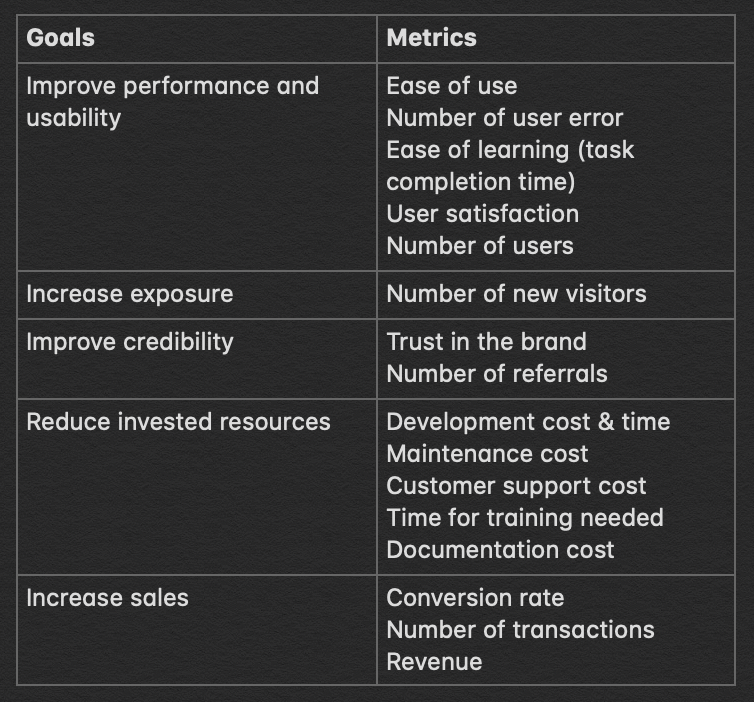

The business value of UX
source link: https://uxdesign.cc/business-value-of-ux-design-35a8039b4817
Go to the source link to view the article. You can view the picture content, updated content and better typesetting reading experience. If the link is broken, please click the button below to view the snapshot at that time.
The business value of UX
What is the ROI of UX design? How to explain the business value of UX design to the client? How to measure the impact of UX design?
If you’re eager to know the answers to these questions, continue reading.

The ROI of UX Design, source: https://s3.amazonaws.com/coach-courses-us/public/theuxschool/uploads/The_Trillion_Dollar_UX_Problem.pdf
Lately, I’ve been reading many reports about the value of UX research and design for software development and also reflecting on its impact on my past projects.
I’ve been working as a UX designer for more than 4 years in the outsourcing companies with clients of a different caliber. Very often the clients challenge us to prove the value of different UX activities during the discovery and definition phases claiming that “UX research consumes a lot of time and resources and postpones the start of development” which translates into “spending a lot of money with no tangible results”. I strongly believe that it is our responsibility to educate clients about the value of what we do and make a case for investing in UX design.
1. Show what happens when UX design is neglected
So first, let’s go through negative outcomes for the company if UX design is neglected during product development lifecycle:
Disappointed customers
Failing to understand users’ drivers and needs during discovery will result in creating irrelevant product that does not meet customers’ needs and expectations. In addition ignoring usability principles may lead to error-prone, inconsistent interfaces that are hard to use.
The value of UX is not wasting time and money developing the wrong solution. Jeff Humble
Lower sales
Disappointed customers lead to lower engagement, adoption and retention and at the end provoke decreased conversion rates and reduced sales.
88% of online consumers are less likely to return to a site after a bad experience. (stats by Invision)
Increased time for development
I’ve met many clients having an erroneous belief that time spent on deeper analysis of user’s behavior, the same as working through all the possible user flows and edge cases is simply waste of time that can be used to speed up the development. In most cases it’s the exact opposite. User research on the early stage of the project sheds the light on the most important parts of the experience, uncovers possible issues and dead ends of the flows. Thus it allows a clear prioritization of the features and facilitates further decision making and release planning. High fidelity prototyping, on the other hand, helps the team to reveal development issues and dependencies that lie deep down below the surface. As mentioned by Dr Susan Weinschenk in “The ROI of User Experience”:
The cost of fixing an error after development is 100x that of fixing it before development.
Bad reputation of the brand
Unhappy customers start spreading the word about their bad experience very quickly. Soon the nasty reviews and poor rating will flood the feedback spaces that are viewed by thousands of people every day. The brand perception will be altered in a blink of an eye.
Decreased motivation of company employees
Bad user experience affects not only the customers but employees and partners as well. Declined brand reputation will demotivate employees and may even cause people quitting their jobs.
2. Present the ROI of UX Design
After we’ve scared the client with all the dreadful consequences of taking UX design for granted, we need to switch to the more pleasant topic that every stakeholder loves to discuss, return on investment. The business value of UX design can be represented by following benefits:
- Increased sales by boosting engagement and conversion
- Increased customer satisfaction and loyalty
- Reduced development time and cost
- Increased employee satisfaction, lower turnover, reduces time for training
- Fewer support calls, reduced spendings of customer support
- Lower risk of implementing the wrong solution
3. Use data to support your statements
Now let’s throw some numbers:
- According to “The Future of Design in Start-Ups” (2016) survey results, 87% of design-mature companies believe that design leads to higher sales, 60% of companies claim that design brings higher customer retention, 83% — higher customer engagement and 60% — faster product cycle.

“Future of Design” survey charts that show the impact of design
- 48% of consumers consider design to be a key factor when determining a company’s credibility.
- According to Baymard Institute studies, e-commerce site conversion rate can be improved by 35% through better checkout design. As Abby Covert, the author of “How to make sense of any mess”, says:
The impact of UX is crystal clear: the more satisfied your users are, the more likely they are to do whatever it is you are encouraging.
- Clothing retailer, Anthropologie, increased sales by 24% with a UX redesign that made its checkout process easier (source).
- Staples e-commerce site redesign brought an 80% increase in the number of visitors, a 45% reduction in drop-off rates, and a 67% increase in repeat customers (case study by HFI).
- As mentioned by Experience Dynamics, UX design saves 50% of development rework time by defining all the requirements upfront. Moreover, it reduces overall development time by 33–50% by improving decision-making process and task prioritization.
4. Identify KPIs of UX design
Close the deal by presenting an overview of goals and metrics that can be used to measure the impact of UX design. Here is the list suggested by Frank Spillers in his “Making a Strong Business case for the ROI of UX” (slightly adjusted by me):

The table with goals and metrics that can be used to measure the impact of UX design
Conclusion
So now you’re armed with a plan of making a case about the ROI of UX design for your clients. Follow these simple steps to educate the stakeholders and show the business value of what you do:
- Show what happens when UX design is neglected
- Present the ROI of UX Design
- Use data to support your statements
- Identify KPIs of UX design
If you have any comments or questions, feel free to post your feedback here or contact me directly.
Recommend
About Joyk
Aggregate valuable and interesting links.
Joyk means Joy of geeK